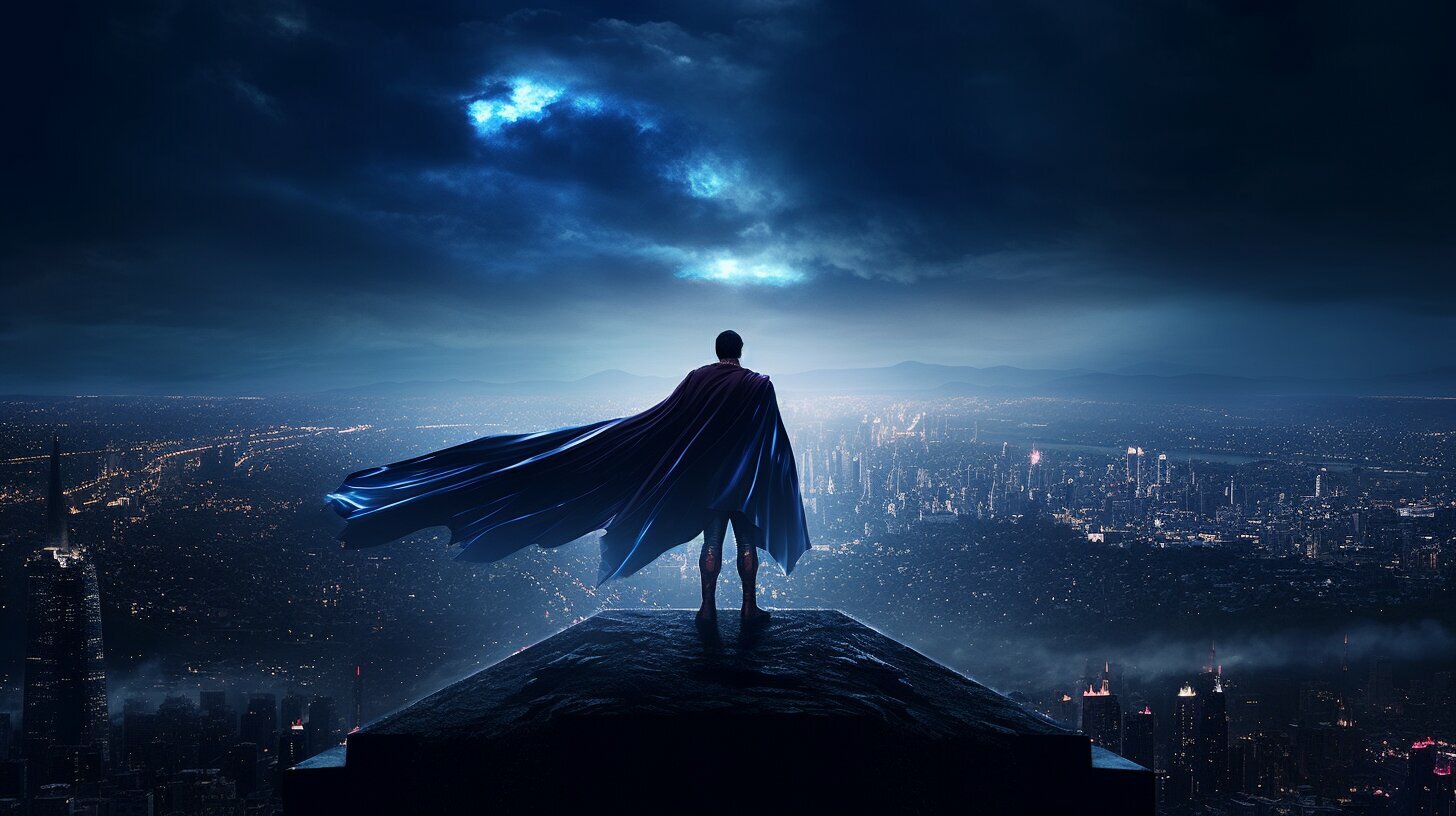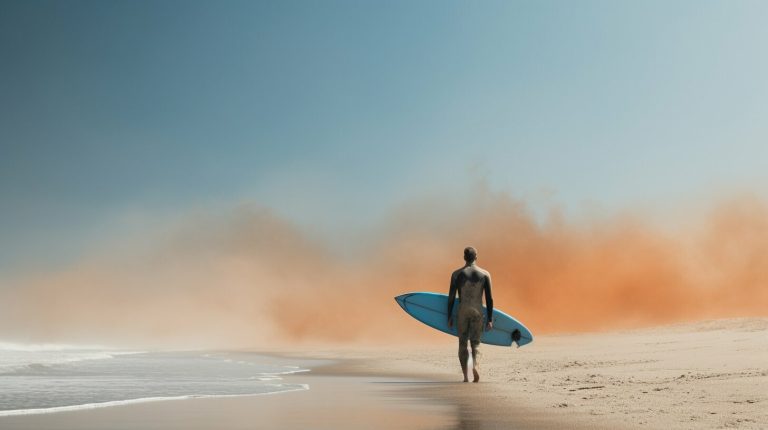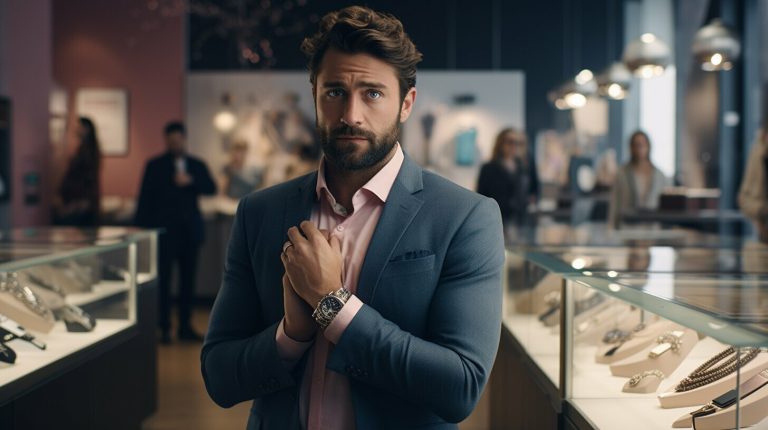Unraveling the Mystery: Why Do Superheroes Wear Capes?
Superheroes have long been associated with their distinctive capes, but have you ever wondered why these crime-fighting icons gravitate towards this particular accessory?
Superheroes wear capes for both aesthetic and practical reasons. Capes enhance their flying and gliding abilities, providing them with an added advantage in their battles against evil. But the significance of capes in superhero outfits goes beyond just functionality.
Historically, capes have been associated with aristocracy and nobility, symbolizing wealth and power. This tradition has influenced the portrayal of superheroes, who often embody a sense of superiority and invincibility. The cape becomes a visual representation of their strength and authority.
In addition to their historical origins, capes also draw inspiration from the circus. Performers in the circus wear capes and leotards for both comfort and protection, and this influence can be seen in superhero fashion as well. Capes not only add a touch of drama to their outfits, but they also provide an element of mystery and intrigue.
Each superhero’s cape serves a specific purpose, tailored to their unique abilities. Whether it’s acting as a shield or diversion in combat, providing camouflage, or possessing magical powers, the cape is a versatile accessory that complements their superhuman traits.
While capes may not be suitable for every superhero, they continue to hold a significant place in superhero culture. They are a symbol of power, strength, and heroism, embodying the very essence of what it means to be a superhero.
Key Takeaways:
- Capes enhance superheroes’ flying and gliding abilities, providing them with an advantage in their battles.
- Historically, capes have symbolized wealth, power, and authority, influencing the portrayal of superheroes.
- The circus has also played a role in the cape’s influence on superhero fashion, adding drama and intrigue.
- Each superhero’s cape serves a specific purpose, tailored to their unique abilities and traits.
- Capes are a significant part of superhero culture, representing power, strength, and heroism.
Capes in Superhero Symbolism
The cape, beyond being a mere piece of fabric, holds symbolic value that taps into cultural and psychological aspects of superhero storytelling. It represents more than just a fashion statement or a functional accessory; it is a visual cue that communicates power, mystery, and elegance. When draped around a superhero’s shoulders, the cape becomes a symbol of their heroic identity and sets them apart from ordinary individuals.
In superhero symbolism, capes often serve as a metaphorical extension of the character’s persona and abilities. Just as a bird uses its wings to soar through the sky, the cape allows superheroes to embody the concept of flight and transcend the limitations of the human form. It evokes a sense of otherworldly grace and freedom, capturing the imagination of audiences and igniting a desire for escapism.
The Psychological Impact
Psychologically, capes have a profound impact on both the hero and the viewer. They create a visual spectacle that captivates the eye and creates a sense of awe. The flowing fabric generates a sense of movement and dynamism, enhancing the hero’s presence and commanding attention. This spectacle draws the audience into the fictional world, suspending disbelief and allowing them to fully immerse themselves in the hero’s journey.
Furthermore, capes tap into our subconscious associations with power and authority. Historically, capes have been worn by royalty and nobility, signifying wealth, status, and control. By donning a cape, superheroes inherit this symbolism and become larger-than-life figures, embodying a sense of leadership and moral righteousness.
The Cultural Significance
Beyond their psychological impact, capes also embrace cultural significance. Throughout history, capes have been worn by heroes from different cultures and mythologies, reinforcing the archetype of the hero in the collective consciousness. From the flowing robes of ancient Greek gods to the regal cloaks of medieval knights, capes have been synonymous with heroism and adventure.
Moreover, capes have a direct connection to the circus and its performers. High-flying acrobats, often depicted wearing capes and leotards, mesmerize audiences with their daring feats. This association with the circus brings an element of excitement and danger to the superhero narrative, adding to the allure of the cape-wearing hero.
Summary
In summary, capes in superhero symbolism serve as powerful visual and symbolic elements. They tap into cultural and psychological aspects of storytelling, evoking a sense of power, mystery, and elegance. Capes extend the hero’s persona and abilities, creating a metaphorical connection to flight and transcendence. They have a profound psychological impact, captivating audiences and invoking associations with power and authority. Additionally, capes hold cultural significance, drawing from historical associations with nobility and the performance arts. Through these elements, capes continue to be an iconic symbol of superheroes, embodying the very essence of power, strength, and heroic ideals.
Historical Origins of Superhero Capes
To truly grasp the story behind superheroes and capes, we must travel back in time and uncover their historical origins. The tradition of superheroes wearing capes can be traced back to characters in both comic books and literary works. Capes have historical associations with aristocracy and nobility, symbolizing wealth and power.
Capes have been a fashion staple throughout history. In ancient times, nobles and kings wore capes as a symbol of their status and grandeur. The flowing fabric and regal appearance of capes became synonymous with power and authority. Over time, capes evolved from practical garments used for warmth to fashion statements that added an air of sophistication to an individual’s ensemble.
The influence of the circus also played a significant role in the popularity of capes among superheroes. Performers in circuses wore capes and leotards for both comfort and protection. The combination of these two elements created an iconic look that captivated audiences and later found its way into superhero costume design.
Superheroes themselves added their own twists to the cape trend. While capes may seem impractical for crime-fighting, they often serve multiple functions. Capes can act as shields or diversions in combat, providing a momentary distraction for the hero to strategize or launch an attack. Some capes even possess magical powers, granting their wearers extraordinary abilities.
| Superhero | Function of Cape |
|---|---|
| Batman | Camouflage and intimidation |
| Wonder Woman | Weapon and symbol of Amazonian heritage |
| Superman | Symbol of hope and inspiration, allows free arm movement while flying |
While capes may not work for all superheroes, they continue to be a significant part of superhero culture. Capes symbolize power, strength, and heroism, attributes that are essential to the superhero narrative. So the next time you see a superhero soaring through the sky with their cape billowing in the wind, remember that there is a rich history and symbolism behind this iconic garment.
Practicality and Function of Superhero Capes
While capes may appear flashy and stylish, they also serve a practical purpose for our beloved crime-fighting heroes. Superheroes often rely on their capes to enhance their abilities and protect them in the line of duty.
One of the key benefits of wearing a cape is its ability to aid in flight and gliding. Capes can be used as makeshift wings, allowing superheroes to soar through the air with ease. Additionally, capes can provide a level of protection, acting as a shield against projectiles or providing camouflage in certain situations.
But capes don’t just serve a defensive purpose; they can also be used as an offensive tool. Some superheroes utilize their capes as weapons, using their fabric to ensnare or distract their adversaries. Capes can be formidable in hand-to-hand combat, providing superheroes with an extra tool in their arsenal.
It’s worth noting, however, that capes are not without their drawbacks. While they offer certain advantages, capes can also be a liability. In close combat scenarios, a cape can be grabbed or used against the superhero, leaving them vulnerable to attack. Additionally, capes can get caught on objects or hinder movement, potentially slowing down a superhero’s response time. It’s ultimately up to each individual hero to weigh the benefits and drawbacks and decide if a cape suits their crime-fighting style.
| Practical Benefits | Drawbacks |
|---|---|
| Enhances flight and gliding abilities | Can be grabbed or used against the superhero in close combat |
| Provides protection and camouflage | May hinder movement or get caught on objects |
| Can be used as a weapon |
Conclusion
While capes may not be suitable for every superhero, they continue to play a significant role in superhero culture. From their historical associations with aristocracy and nobility to their practical benefits in crime-fighting scenarios, capes have become a symbol of power, strength, and heroism.
So, the next time you see a superhero soaring through the sky with their cape billowing behind them, remember that there’s more to it than just flashy fashion. Capes are not only a stylish accessory but also a practical tool that helps our favorite heroes save the day.
Iconic Cape Designs and Superhero Personalities
Each superhero’s cape design is carefully crafted to reflect their unique persona and enhance their superhero identity. Just like their costumes, superheroes’ capes play a crucial role in conveying their power, style, and the essence of their characters. From the iconic red cape of Superman to the flowing black cape of Batman, these designs have become synonymous with their respective heroes.
One prime example of an iconic cape design is Wonder Woman’s gold-trimmed, flowing red cape. It symbolizes her strength, grace, and regality, mirroring her Amazonian heritage. The cape’s vibrant color and classic design also signify her status as a beacon of hope and justice.
Another noteworthy cape design can be seen in Spider-Man’s suit. The web-like patterns on his red and blue cape not only add visual appeal but also represent the superhero’s agility and ability to swing through the city using his web-shooters. Spider-Man’s cape seamlessly merges style with functionality, enabling him to maneuver swiftly in his crime-fighting endeavors.
Capes aren’t limited to traditional superheroes either. In the Marvel Cinematic Universe, Doctor Strange’s cape takes on a life of its own. Known as the Cloak of Levitation, it not only adds a mysterious and mystical touch to his ensemble but also possesses its own intelligence. It enhances Doctor Strange’s magical abilities and aids him in combat, making it an indispensable part of his superhero repertoire.
| Superhero | Cape Design | Symbolism |
|---|---|---|
| Wonder Woman | Flowing red cape with gold trim | Strength, grace, and regality |
| Spider-Man | Red and blue cape with web-like patterns | Agility and web-slinging abilities |
| Doctor Strange | Cloak of Levitation | Mystery, magic, and combat aid |
These examples are just a glimpse of the diverse range of cape designs that exist within the superhero world. Each cape is thoughtfully designed to not only enhance the hero’s appearance but also tell a story about their origins, powers, and personality. Whether it’s a symbol of strength, an extension of their superhuman abilities, or a source of mystical power, the cape remains an iconic element that defines superheroes and captivates audiences worldwide.
The Enduring Legacy of Superhero Capes
As we conclude our exploration of superhero capes, it becomes evident that these iconic garments have not lost their allure and continue to shape the world of comic book heroes. Superheroes wear capes for both aesthetic and practical reasons, with each cape design reflecting the unique personality and powers of the character. Capes enhance the flying and gliding abilities of superheroes, allowing them to swoop through the sky with grace and agility. They can also provide protection, serving as a shield against enemy attacks or as a camouflage in the night.
The tradition of superheroes wearing capes dates back to characters in both comic books and literary works. Capes have historical associations with aristocracy and nobility, symbolizing wealth and power. They harken back to an era when superheroes were seen as modern-day knights, fighting for justice with honor and valor. Capes also draw inspiration from the world of the circus, where performers often wear capes and leotards for both comfort and protection.
Capes have different functions for different superheroes, showcasing the versatility and adaptability of this iconic garment. Some capes possess magical powers, allowing the wearer to teleport or manipulate objects. For others, capes act as a weapon, used to ensnare enemies or distract them. Superman, the Man of Steel, wears his cape on his back to allow for a free range of motion with his arms, enabling him to deliver powerful punches and strikes. Each superhero’s cape serves a purpose unique to their abilities and persona.
While capes may not work for all superheroes, they continue to be a significant part of superhero culture. The cape symbolizes power, strength, and heroism, instantly recognizable as a hallmark of a superhero. Whether flowing in the wind or wrapped tightly around the hero’s shoulders, the cape visually represents the extraordinary capabilities of these fictional characters. From Batman’s sleek and imposing cape to Wonder Woman’s vibrant and majestic one, cape designs have become intrinsic to the visual identity of superheroes.
| Superhero | Cape Design | Function |
|---|---|---|
| Superman | Long red cape with iconic “S” emblem | Enhances flight and gliding abilities, symbolizes hope |
| Batman | Black cape with scalloped edges | Provides protection, disguises movement, adds dramatic flair |
| Wonder Woman | Vibrant and flowing cape with gold accents | Symbolizes grace, authority, and heroism |
In conclusion, superhero capes have a rich history and enduring legacy. They serve both practical and symbolic purposes, enhancing the abilities of superheroes while representing their noble and heroic ideals. From their origins in literature and comics to their influence on fashion and popular culture, capes continue to captivate and inspire audiences worldwide. As we celebrate the iconic designs and functions of superhero capes, it is clear that these garments are here to stay, forever woven into the fabric of superhero mythology.
Conclusion
Superhero capes have stood the test of time, symbolizing more than just fashionable attire; they represent the embodiment of heroic strength and the enduring legacy of these awe-inspiring characters.
Throughout this article, we have delved into the significance of capes in superhero outfits and unraveled the mystery of why superheroes choose to wear them. We explored the cultural and psychological reasons behind superheroes wearing capes, as well as their historical origins.
From their association with aristocracy and nobility, symbolizing wealth and power, to their influence from the circus with performers wearing capes for comfort and protection, capes have a rich history. They have evolved from being a fashion statement to serving practical purposes such as enhancing flying abilities, providing protection, and functioning as a weapon.
While capes may not work for all superheroes, they continue to be a significant part of superhero culture. Cape designs contribute to the overall personality and image of iconic characters, and they play different roles in combat scenarios.
Superhero capes hold a timeless appeal as a symbol of power, strength, and heroism. They embody the essence of what it means to be a superhero and serve as a visual representation of their extraordinary abilities. As long as there are superheroes, capes will continue to be an iconic and enduring element of their costumes.
FAQ
Why do superheroes wear capes?
Superheroes wear capes for both aesthetic and practical reasons. Capes enhance their flying and gliding abilities and can provide protection, camouflage, and function as a weapon.
What is the historical origin of superhero capes?
The tradition of superheroes wearing capes can be traced back to characters in both comic books and literary works. Capes have historical associations with aristocracy and nobility, symbolizing wealth and power.
How do capes function for different superheroes?
Capes have different functions for different superheroes. They can act as a shield or diversion in combat, possess magical powers, or allow for a free range of motion with the arms like Superman’s cape.
Are capes practical for crime-fighting?
Capes have practicality and functional aspects for crime-fighting. They can aid in combat situations, but also have drawbacks that superheroes need to consider.
Do iconic cape designs reflect superhero personalities?
Yes, iconic cape designs contribute to the overall personality and image of popular superheroes. The design of the cape often reflects key aspects of the character’s persona.
What is the enduring legacy of superhero capes?
Superhero capes continue to be a significant part of superhero culture. They serve as a symbol of power, strength, and heroism and continue to evolve in fashion trends.
- Discovering Why Do Women Wear Lipstick: A Deeper Look - 19/12/2023
- Why Do Golfers Only Wear One Glove? - 16/12/2023
- Why Don’t Hobbits Wear Shoes? - 14/12/2023
Hi, I’m Rhiannon, the lead author behind The News Wire. As a passionate journalist, I strive to bring you the latest news and updates from all over the world. With a keen eye for detail and a dedication to unbiased reporting, I aim to deliver well-researched and informative articles that keep you informed and engaged. From breaking news to in-depth analyses, I cover a wide range of topics with the aim of keeping you in the loop. Join me on The News Wire as we explore the dynamic and ever-changing landscapes of global events, uncovering the stories that matter most.






